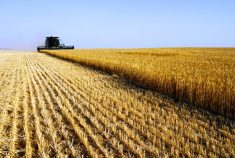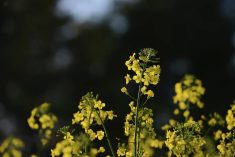Reuters — A U.S. weather forecaster on Thursday predicted a 62 per cent chance of the El Niño phenomenon developing in the Northern Hemisphere during May-July, and a strong chance toward end-year, likely compounding risks to crops across the globe.
“The coastal warming in the eastern Pacific may foreshadow changes across the Pacific basin. Therefore, an El Niño watch has been issued, and the range of possibilities toward the end of the year includes a strong El Niño,” the National Weather Service’s Climate Prediction Center (CPC) said.
Read Also

Brazil to reap record soy crop in 2025/2026, increase exports
Brazil’s Conab said the country will reap a record soybean crop of 177.6 million tons in the 2025/2026 harvest year, according to data released on Thursday.
Neutral conditions would prevail through spring, the CPC added.
The El Niño phenomenon is a warming of ocean surface temperatures in the eastern and central Pacific, sometimes causing crop damage, flash floods or fires.
“We note that a transition to El Niño, widely expected to occur during the second half of 2023, would be expected to weigh on rice yields across Southeast Asia, Mainland China, and both southern and eastern India,” Fitch Solutions said in a note last week.
Cereal and oilseed crops across Asia are forecast to face hot and dry weather, with meteorologists expecting the El Niño weather pattern to develop in the second half of the year, threatening supplies and heightening concerns over food inflation.
On Monday, the Japan weather bureau also pointed to a 60 per cent chance of an El Niño pattern during summer.
But for some regions, El Niño could be beneficial in the near term. Argentina, which is currently facing drought conditions, could see improved weather.
It could also boost yields for U.S. cotton farmers, who were forced to abandon a big chunk of cropland in 2022 after a crippling drought.
According to Environment Canada, El Niño’s effects on Canada are seen mostly during winter and spring, when it’s associated with milder-than-normal conditions in western, northwestern and central parts of the country.
Generally, Environment Canada said, El Niño does not significantly impact Eastern Canada — including the Maritimes — but has been associated with reduced tropical cyclone activity in the Atlantic Ocean.
This week’s predictions also call for El Niño to damp down the storm outlook for the 2023 Atlantic hurricane season.
— Reporting for Reuters by Ashitha Shivaprasad with additional reporting by Arpan Varghese in Bangalore. Includes files from Glacier FarmMedia Network staff.














